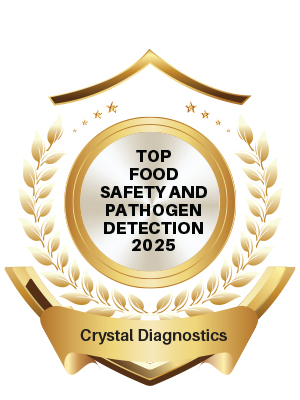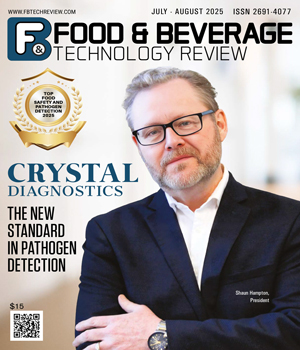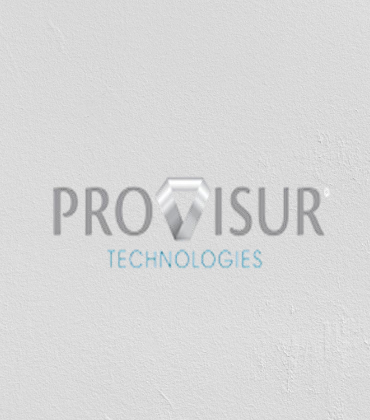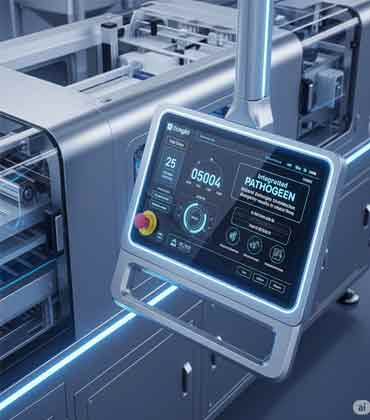THANK YOU FOR SUBSCRIBING
Food and Beverages Tech Review: Specials Magazine
Detecting harmful pathogens in food is the first and most critical step to safeguarding public health. True detection takes more than speed. It calls for precision, clarity and a sharp focus on what really matters; finding live, viable threats. When results are definitive and easy to interpret, food safety teams can act fast, contain risks and stay ahead of ever-tightening regulatory demands. Crystal Diagnostics is purpose-built for that level of accuracy. Its novel liquid crystal technology detects live foodborne pathogens, giving laboratories clear, timely results they can trust. “We're dedicated to solving the challenge of foodborne pathogen detection, and our liquid crysal technology offers an accurate, clean and straightforward method for detecting pathogens,” says Shaun Hampton, president. Its approach represents the kind of breakthrough the food safety industry has long awaited. Significant strides have been made, especially since the 1990s, when deadly outbreaks like the fast food E. coli crisis led to sweeping regulatory reforms. Despite these efforts, foodborne illness rates have plateaued, according to the Centers for Disease Control and Prevention. Now, with USDA and FDA pushing “farm to fork” traceability systems, the demand for faster, more accurate and scalable detection solutions has never been greater. Existing tools like polymerase chain reaction (PCR) often fall short in distinguishing between live and dead pathogens. PCR amplifies DNA from both live and dead organisms, possibly resulting in false positives and unnecessary product recalls. It’s also labor-intensive and slower to deliver results. Crystal Diagnostics eliminates these pain points by removing DNA amplification entirely and zeroing in on live pathogens. At the heart of this capability is a biosensor that fuses antibody-coated microspheres with liquid crystals to identify pathogens through optical distortion. When a live pathogen binds to a microsphere, it disrupts the surrounding liquid crystal alignment, creating a visible disturbance that can be captured and analyzed in real-time. The outcome is a clean, binary yes-or-no answer, with none of the complexity that comes with molecular amplification methods. This significantly improves precision and reliability while removing the ambiguity that has long plagued food testing labs. Built for the Food Safety Frontline Crystal Diagnostics’ innovative systems didn’t emerge from a conventional product roadmap. They began as an academic quest to solve one of food safety’s biggest challenges. In collaboration with Kent State University’s Liquid Crystal D Institute and Northeast Ohio Medical University (NEOMED), a novel biosensor concept was transformed into two flagship solutions; AccuPath™ and AccuPath MAX™ . These systems bridge the gap between academic research and industry-ready application, delivering scalable, real-time pathogen detection for today’s food safety labs.
Food Processing Equipment Manufacturer 2025
The food processing industry is undergoing a rapid transformation, driven by the need for greater efficiency, safety and environmental responsibility. As global demand for high-quality, responsibly produced food grows, businesses seek innovative solutions that optimize production while reducing waste and energy consumption. Provisur Technologies is at the forefront of this evolution, providing reliable processing solutions that help food manufacturers meet evolving industry standards while maintaining cost-effectiveness and sustainability. Provisur is more than an equipment manufacturer—it is driving progress in food processing by developing specialized solutions that enhance efficiency, maintain food safety and reduce environmental impact. Through innovations such as high-speed slicing technology, precision forming systems and automated grinding and mixing solutions, it helps food processors achieve higher yields while minimizing waste. Its separation technology ensures product purity by effectively removing unwanted materials from meat, poultry and seafood, while its energy-efficient equipment supports sustainability goals. It empowers food processors worldwide to stay ahead of industry demands through tailored, high-performance systems that balance productivity with responsible resource management. “We want to help our industry develop sustainable technologies to run efficient operations and create better products at a lower cost,” says Mel Cohen, president & CEO. Its advanced processing technologies optimize speed, precision and consistency across various stages of food production. From high-speed slicers that improve throughput to automated grinding systems that ensure product uniformity, it provides tailored solutions to meet the unique needs of food processors. One of its standout innovations is the Formax forming system, which offers unmatched precision in shaping proteins, ensuring consistent product quality and reducing raw material waste. Alongside, its Weiler grinding and mixing solutions are known for their reliability and ability to optimize meat processing workflows, helping businesses achieve higher output while lowering costs. In an industry where food safety and regulatory compliance are paramount, Provisur equips its customers with cuttingedge technology designed to meet the most stringent global standards. The company’s separation technology ensures the highest levels of food purity by seamlessly removing unwanted materials from meat, poultry and seafood products. On top of that, its hygienic design principles and advanced cleaning systems minimize the risk of contamination, safeguarding both consumers and brands. With a commitment to safety, it helps food processors maintain compliance while delivering superior-quality products. Provisur is dedicated to reducing food waste, optimizing resource utilization and lowering energy consumption. By developing energy-efficient equipment and promoting responsible processing practices, it supports food processors in improving profitability while minimizing environmental impact. The company continuously explores new eco-friendly solutions, from using recyclable materials in equipment manufacturing to integrating smart energy management systems. Through close collaboration with industry partners and customers, it ensures that responsible resource management remains a priority, delivering long-term economic and environmental benefits.
Wine Producer Of The Year 2025
Picture relishing the delightful nuances of Robert Mondavi Cabernet Sauvignon, immersing you in the charm of Napa Valley’s sun-soaked vineyards. Or perhaps indulging in the crisp, citrus notes of Kim Crawford Sauvignon Blanc that evokes images of New Zealand’s picturesque landscapes. These exquisite experiences are but a glimpse into the portfolio of Constellation Brands (NYSE: STZ), a revered titan in the sphere of wine craftsmanship and ingenuity. Founded by Marvin Sands in upstate New York under the name Canandaigua Industries, the company embarked on its journey with a humble beginning, initially focusing on the sale of bulk wine in barrels. Despite modest beginnings, its entrepreneurial spirit propelled it forward, grossing notable sales within the first few years. Throughout the ensuing decades, Constellation Brands experienced significant growth and expansion. By 1951, it had achieved a milestone of $1 million in sales, signaling a burgeoning presence in the market. A pivotal growth moment arrived in 1954 with the introduction of Richard’s Wild Irish Rose. This period also witnessed the company’s transition to public ownership, rebranding as Canandaigua Wine Company, Inc. in 1973. The following years saw Constellation Brands engaging in strategic acquisitions to strengthen its portfolio and extend its reach. In 1974, the acquisition of Bisceglia Brothers Winery in California marked a significant expansion into new territories, laying the groundwork for future growth. The launch of J. Roget Champagne in 1979 further diversified the offerings and solidified the company’s presence as a key player in the sparkling wine market. Subsequent endeavors, such as the integration of Barton Incorporated in 1993, underscored the company’s commitment to diversification and innovation. In 2000, Constellation Brands initiated a transformative phase, culminating in a significant rebranding effort that saw the company adopt its current name. This pivotal moment signaled the beginning of a new era, characterized by expansion into global markets through strategic acquisitions. Advancing Innovation and Collaboration “With every step we take, we are positioning Constellation for sustained, long-term success and invite you to learn more about our journey to realize our bold ambitions,” says Bill Newlands, President and CEO of Constellation Brands. “We have a great product portfolio, a relentless focus on the consumer, the right strategy, and a diverse and talented team in place to drive us toward that future.” Constellation Brands is always on the lookout for forward-thinking partners who share its passion to push boundaries and deliver what’s next. The company is dedicated to fostering enduring and impactful collaborations within the industry. Its primary objective is to propel industry growth by cultivating capabilities, sharing resources, and fostering innovation, all aimed at enhancing quality and enriching the consumer experience.
CXO INSIGHTS
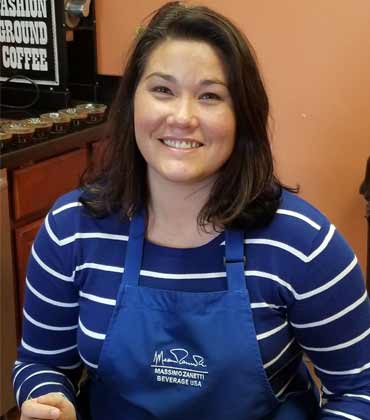
Ensure Success By Meeting Industry Regulations
Dorothea Hescock, Sr. Director of Quality / R&D, Massimo Zanetti Beverage USA

Enhancing Food Safety through Business Innovations
Lorien Carley, Quality Manager, Fonterra

How to overcome current Challenges with Foodborne Pathogens in the Food Manufacturing Industry?
Riaz Ahamadeen, Vice President of Quality/Food Safety & Regulatory – North America, Oatly Inc

Food Safety
Ron Burke, Sr. Director of Food Safety, Quality and Regulatory, Ardent Mills

Elevating Food Safety Across Borders
Adeniyi Odugbemi, Global Director, Quality and Food Safety, ADM
IN FOCUS
Designing Food Processing Equipment with Integrated Pathogen Detection: Innovations for Safer Production Lines
Integrating pathogen detection in food processing enhances safety through real-time monitoring, faster responses, and reduced recall risks, ultimately improving product quality and consumer confidence.
EDITORIAL
The Next Chapter in Food Safety and Processing
Food safety and processing are entering a bold new era, where technology goes beyond detecting pathogens to preventing them. From AI-driven foresight to portable diagnostics and traceable supply chains, innovation is redefining how we produce wine and other food in the modern world. Handheld and paper-based diagnostic devices are enabling on-site detection of pathogens like Salmonella and E. coli in just hours. These ultra-rapid, portable tests dramatically shorten the time from sample to result and empower food producers to act swiftly to avoid contamination risks. Lab-on-a-chip and paper microfluidic devices embedded with biosensors offer low-cost, scalable and real-time pathogen monitoring options, ideal for decentralized environments. AI-driven predictive analytics are being incorporated into pathogen monitoring platforms to analyze historical and real-time data, forecasting contamination hotspots before they occur. By shifting from reactive testing to proactive risk management, these tools help businesses prevent outbreaks and reduce costly recalls. This edition of Food and Beverage Tech Review highlights recent developments in food safety and pathogen detection, the wine production sector and food processing equipment manufacturing. It also offers insights into how organizations can adapt to these disruptive trends to deliver transformative customer experiences. It features thought leadership articles from industry experts, including Riaz Ahamadeen, VP of quality/food safety & regulatory, North America at Oatly Inc., who discusses strategies for overcoming challenges with foodborne pathogens in food manufacturing. Wumi Yusuff, senior director of food safety at Ferrara Candy Company, shares insights into driving enterprise-wide food safety through collaboration and empowerment. It also features Crystal Diagnostics, an ultimate destination for liquid crystal-based pathogen detection. Its novel liquid crystal technology detects live foodborne pathogens, giving laboratories clear, timely results they can trust. We hope this edition, featuring food safety and pathogen detection, wine producers and food processing equipment manufacturers of 2025, helps you build the partnerships your organization needs to sharpen its competitive edge in the food and beverage industry.


